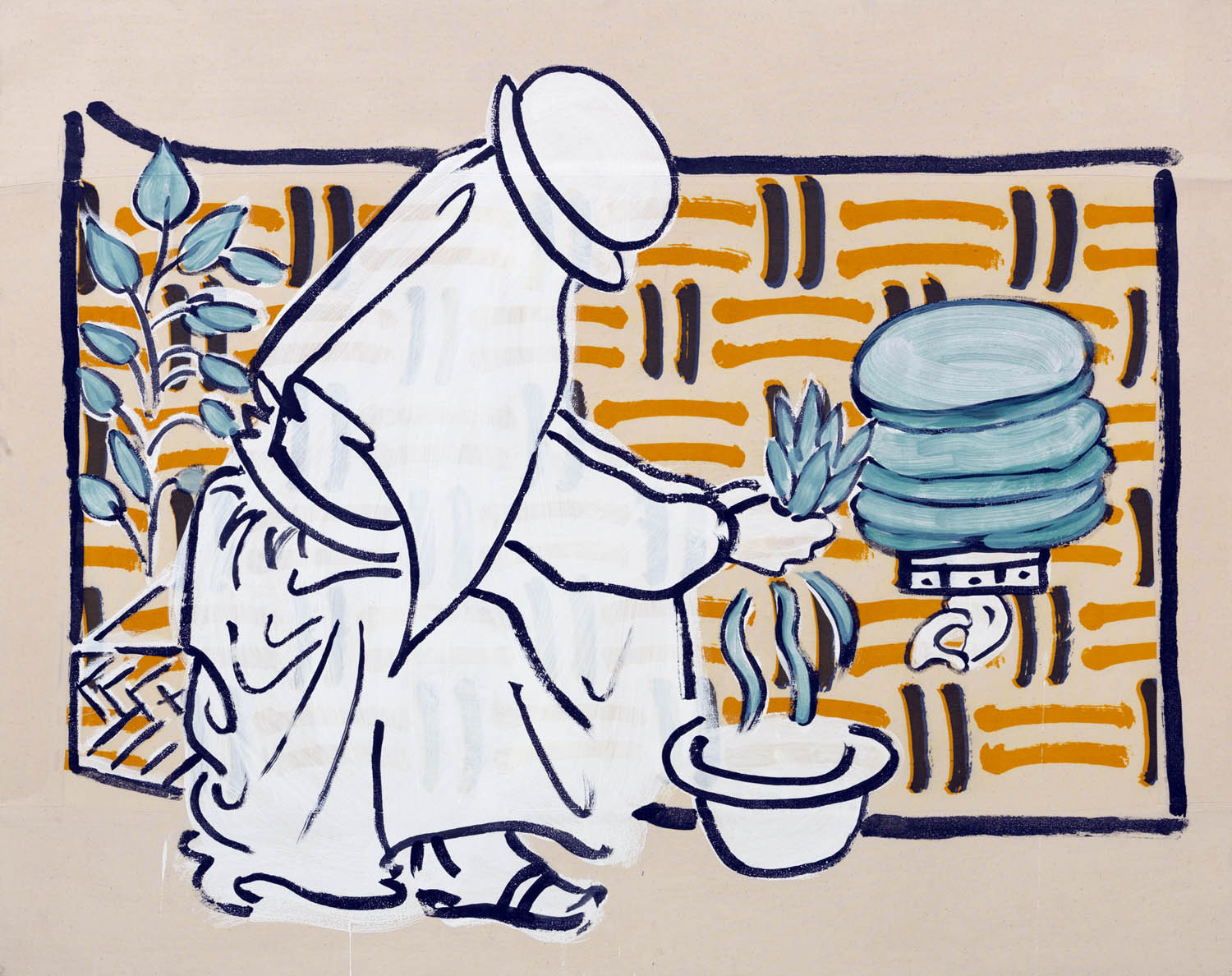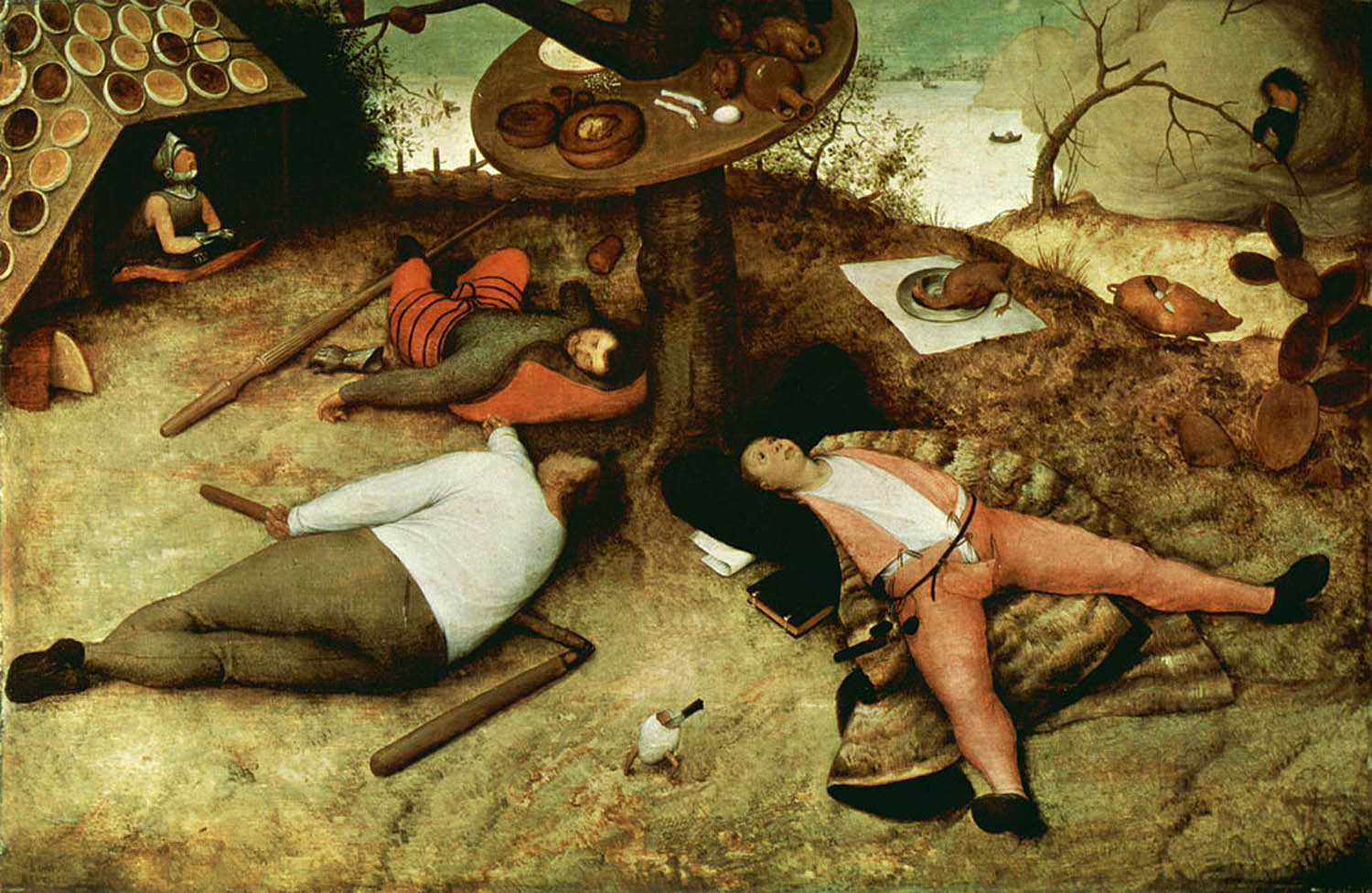Pigment Garden
The series The Peasants are Revolting! is accompanied by the artist Sigrid Holmwood's research on the Pigment Garden. She sees the history of pigment-related plants as part of the materiality through the process of making pigments.
The Pigment Garden is located in a dilapidated old farmstead(cortijo) in Almeria, Spain. This long-derelict farm was refurbished by a British artists couple, Simon and Donna, who founded “Joya: arte + ecologia”, an artist-led research center for fieldworkers.
When Sigrid entered this environment for the first time, she realized the existence of colonial history in the contemporary spectacle. She noticed that some of these areas were occupied by prickly pear cactus, a plant that originated in Central America, and was imported from Mexico during the colonial period. From this, the artist began to explore a new clue about plant dyes in Europe, especially during the Spanish dynasty.
From plants to pigments
The pigments used in the series The Peasants are Revolting! consist of a mixture of plants and insects, the plants of which are native to Europe and Central America. Mordant-printed calico and dye techniques were applied onto the background fabric of the paintings which was also painted with plant pigments on its surface. The methods of producing these plant pigments are originated in Europe and Central America.
Sigrid used woad to make Mayan blue, a pigment that demonstrates the maximal hybridity. This striking pigment is made from tropical indigo plants (in a language of the Aztecs, Navajo, it’s called xuiquílitl) native to Central America. It was made using the unique craft of the Indians and has excellent stability. The Mayans invented Mayan Blue pigments around 700 CE which eventually became widely used in Central America. The clues of the methods of making Mayan Blue can be found in the images in The General History of Things of New Spain, otherwise known as the Florentine codex is the most complete manuscript that has all these records, it was created collaboratively by Fray Sahagún and a group of anonymous indigenous (painters / scribes) around 1575-1577. It is the world's first ethnographic work, consisting of twelve volumes of illustrations, including the daily life, religious and political customs of the Nahua, and the natural history of animals, plants and minerals of Mexico, written in Spanish and alphabetized Náhuatl. Chapter Ⅺ of this book is dedicated to the delineation of fine pigments obtained from plants for painting and dyeing, including the illustration of tropical indigo (xuiquílitl) used to make Mayan blue.

A page from the Florentine Codex (c.1577), image from internet.
 Making Mayan Blue, Sigrid Holmwood
Making Mayan Blue, Sigrid Holmwood
Mayan blue made from woad, ink and gesso, on calico mordant printed with logwood and dyer's broom, on board, 105 x 126.5 cm, 2017
But in the rise of colonialism in the seventeenth century, the production method of such pigments was lost. Until the late twentieth century, the technology behind the paint was rediscovered through archaeological and chemical analysis. Today, the artist retells a new chapter of the intertwined narratives of the native American and European farmers under colonialism and Western modernity through a re-adjusted formula using European indigo and woad.
Peasants and peasant painting
After the failure of the European peasant revolution, the image of the peasant was once something that only serves to present and set-off the bourgeoisie, constructed with the characteristics of temptation, greed and irrationality. Sigrid's understanding of Brugel's work The Land of Cockaigne (1567) seems to be different from others. Land of Cockaigne means farmers' wish for a fertile land, "Cockaigne" from French "cocagne", namely the woad balls, a material that produces indigo plant dyes, was one of the first crops to appear on the European commodity market. Sigrid also looked at a prickly pear cactus plant that was often overlooked in the background, which can be infected by cochineal to form a deep red dye. This may indicate that with the trade of Cochineal and Indigo, the New World has become a rich new land in the eyes of the colonists. Sigrid focused on discussing the history of early modern development in Europe and discovered that in the process of capitalist development, there was a trajectory of the peasants being marginalized and under oppression, both conceptually and materially. The artist incorporates the exploration of plants and dyes into the thinking around this development trajectory, and find this unique research strategy by "taking a different path" under the current status of a Eurocentric art historical research.
 The Land of Cockaigne, Pieter Bruegel de Oude,
The Land of Cockaigne, Pieter Bruegel de Oude,
Oil on panel, 52 cm × 78 cm,1567
Image from internet
 The Land of Cockaigne, Sigrid Holmwood
The Land of Cockaigne, Sigrid Holmwood
Mayan blue made from woad, cochineal, madder, and gesso, on calico mordant printed with dyer's broom and logwood, on board
120 cm × 170 cm, 2017
Sigrid believes that this 'peasant-paintin' is a decolonial gesture, since itcreates conversations between plants, peasants, and Aztecs, working on both epistemological and ontological registers, revealing the matrices of colonial power that construct categories of knowledge and the human. She said, "My practice expands 'painting' by addressing its materiality and circulation through the relationship between painting and the figure of the peasant."




